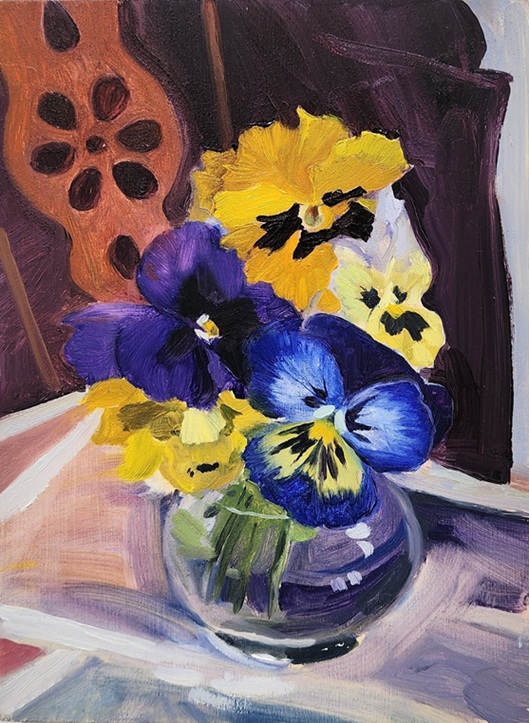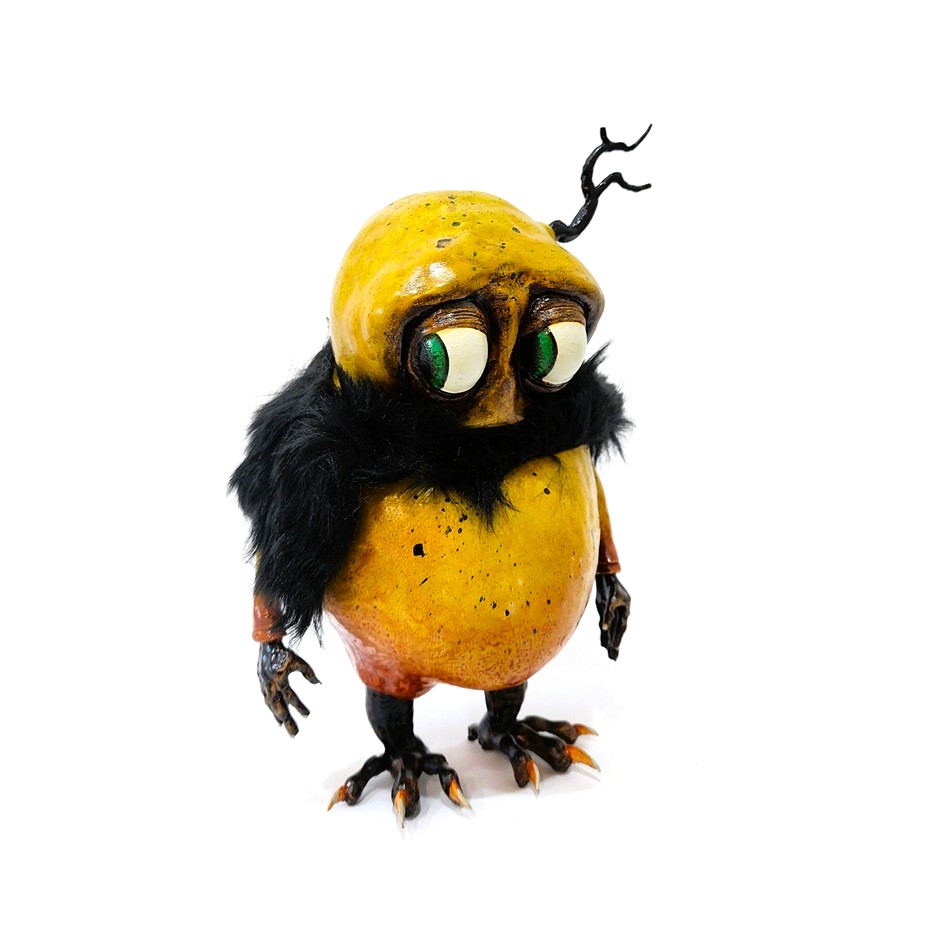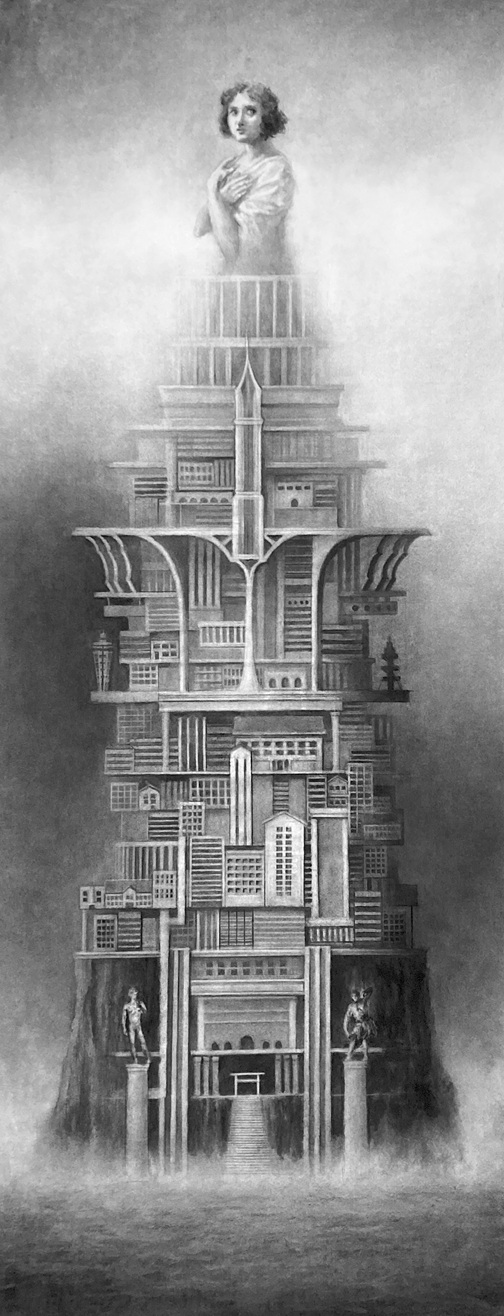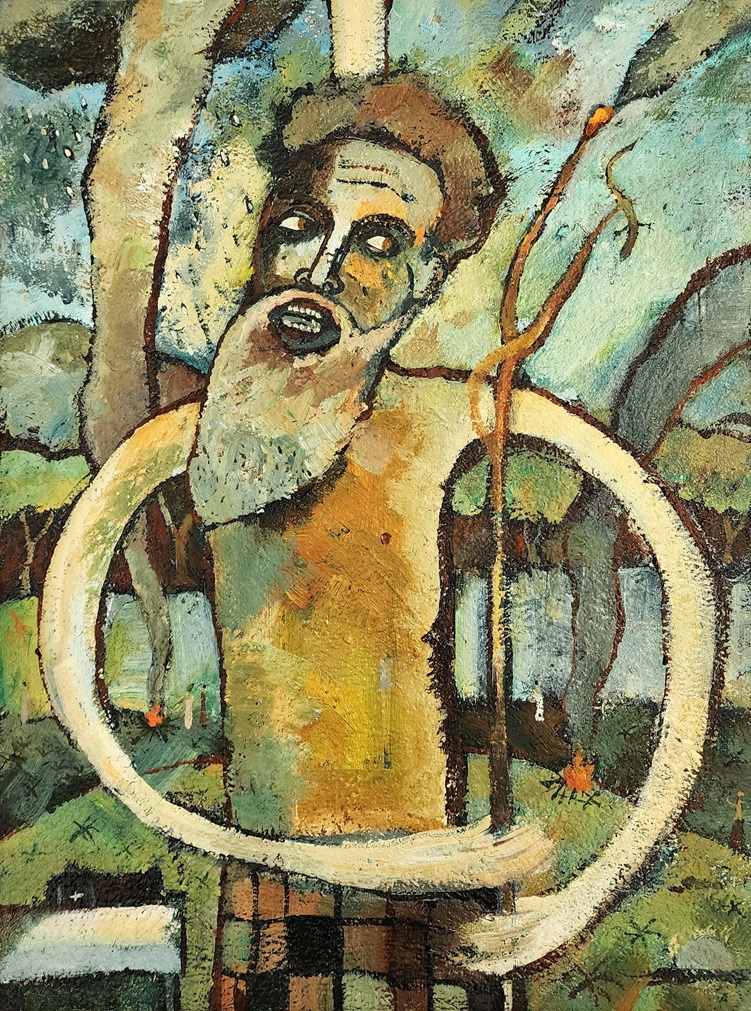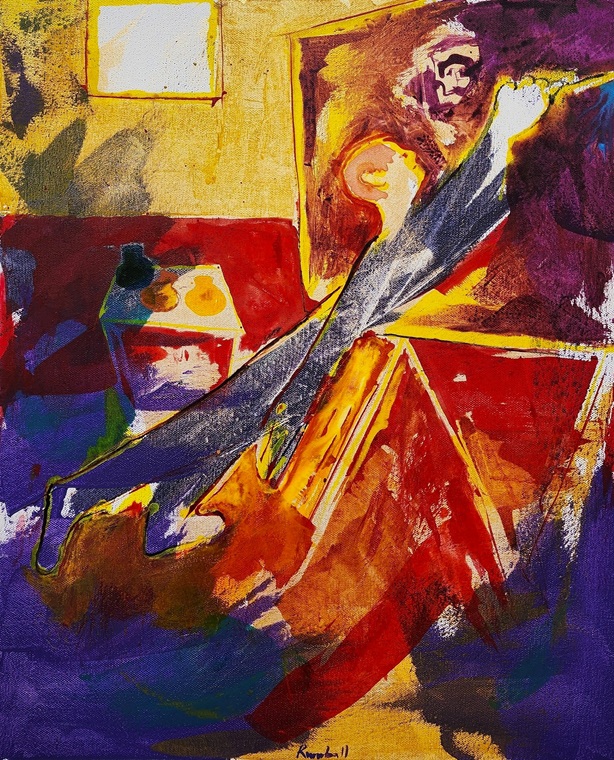Previous Exhibitions
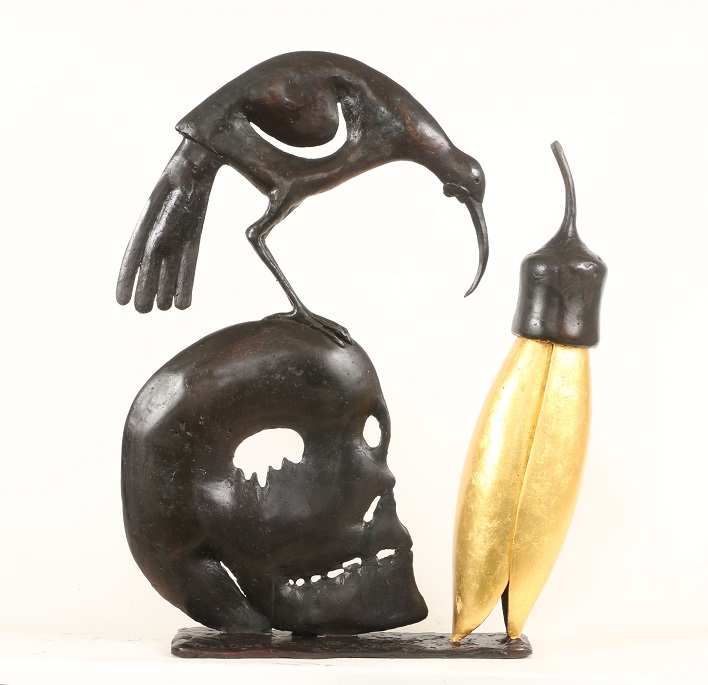
This month’s group exhibition is BONES.
The exhibition brings together a number of bones, skulls and skeletons, spanning histories from the Middle East to the antipodes, as well as encompassing more abstract interpretations.
Exhibition images and a brief commentary are set out beneath the images below.
BONES - a group exhibition
The paintings of Cam Munroe, Dig 1, 2 and 3, recall archaeological excavation sites. An imagined collection of unearthed relics is carefully laid out across the canvas, as if assembled in preparation for catalouging and interpretation; curious symbols and artefacts holding the promise of unlocking mysteries about past civilisations.
A ritual practice of ancient Egyptian civilisation is echoed in Angela Tier’s stoneware works, Death Wish Urns: Vessels for Dust and Bones. Canopic jars were used in ancient Egyptian burials for preserving the viscera of their mummified owners. Four jars, with lids sculpted in the shape of heads, would be placed in the tomb close to the preserved body. In Tier’s interpretation, the sculpted lids are in the form of four animal heads: dog, cat, raven and vulture.
Brett a’Court’s paintings have a distinctly New Zealand genesis. Te Kooti’s Horse (The White Horse of the Apocalypse) recalls the white horse ridden by the Māori prophet in the 1800s. Followers of Te Kooti believed the horse was the embodiment of the White Horse from the Book of Revelation, with mystical powers to ensure its rider eluded capture. Paradoxically, a’Court’s more recently completed painting, The Resurrection of the Moa, digs more deeply into New Zealand history, remembering our lost large bird, now extinct for around 500 years.
The Bone Charmer is a new series of works by Kirsty Gardiner, inspired by a book of that name by Breeana Shields. Bone charms are magical items, usually made from whale bone. In Gardiner's works the charms are made of clay and metal, to represent the reincarnation of a heron, a sacred bird, symbolising patience, rarity, and good luck. The birds are adorned with flowers, leaves and other ephemera to convey their spiritual significance.
Elspeth Shannon’s painting, Night Stones as Dry as Bones, is a more abstract response to the exhibition theme.
Lee-Ann Dixon’s paintings on vintage ware have long featured animal and bird skulls; this month’s exhibition includes both. Visual tributes to life’s transience, Dixon’s meticulous paintings capture imagined moments and the passing of time.
Naga Tsutsumi’s central charcoal work features a cascade of bones, falling from the heavens above a solitary cat … to the puzzlement of the Magnificent Seven dogs in the background. A second charcoal work, simply titled Bone, depicts a single bone protruding from a tangled tower of tumbling cats.
In Paul Dibble’s bronze sculpture, Huia Acknowledges Death, an extinct huia perches on a human skull - as if engaged in conversation, each seemingly oblivious to their demise. A lone kowhai blossoms beside them and their impossible discourse. The work is a play on the contrasts of beauty and decay, and of life and loss; a poignant foretelling of the end to come.
A gilded bronze wishbone by Fran Dibble is modelled on the wishbones used in the childhood game, where players each grab an end and pull until the bone breaks, the biggest end granting the winner a wish. Dibble's version - not for breaking - is a tribute to hopes and dreams, and childish fun.
Painter Tony Rumball approached this month’s theme with characteristic dry humour. Years of experience working with stock is evident in his beast and farmer pairings in Showtime (about being fit for an A&P show) and Through and Through (depicting a tired old couple). Past Caring is a wry predator/prey still life; while the gentle concern of one beast for another is playfully expressed in Your Chassis’s Showing.
Away from the farm and onto the rugby field, Rumball painted One Last Conversion after viewing Hiebeler’s 20-panel Totentanz (Dance of Death) in Füssen, Bavaria. Rich and poor, merchant and beggar, athlete and frail old man: all will eventually be called to dance the last dance.
This month's BONES exhibition remains on display until Sunday 28 August 2022.




















